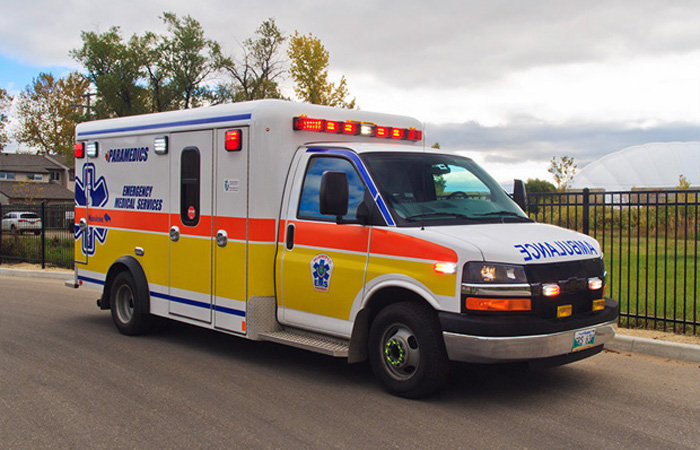A dedicated stretcher service is now providing transportation for low-acuity patients in three Manitoba communities while freeing up paramedics and ambulances to respond to emergencies and provide care for more sick patients.
“The Manitoba government is expanding the range of emergency response services in Brandon, Selkirk, and the Morden-Winkler area as part of our ongoing commitment to providing better care sooner,” said Health Minister Audrey Gordon. “Establishing a stretcher service in these communities to support stable patients going to appointments or between facilities will allow paramedics and ambulances to focus more efforts on providing life-saving care in the community.”
While new to rural Manitoba, the low-acuity inter-facility transport (IFT) service is similar to a long-standing contracted service provided in Winnipeg that transports hospital inpatients and personal care home residents to medical appointments, diagnostic tests or treatment. Brandon-area services were added in January, Selkirk launched in early February and Morden-Winkler operations begin today. Patient Transport Services has been contracted to provide these services.
High-acuity (very sick or injured) patients will continue to be transported by ambulance in all situations where paramedic skills may be needed or a transfer to a more specialized centre is required.
Adding IFT services in these three communities has already saved ambulances more than 300 trips and is expected to save approximately 3,600 trips in total each year.
“Historically, ambulances staffed by highly skilled paramedics have been used to transport patients to routine medical appointments, diagnostic or laboratory tests, or for treatment. This often takes a crew out of a community for an extended period of time, requiring other crews to be re-positioned to provide coverage,” said Dr. Rob Grierson, chief medical officer for emergency response services, Shared Health. “With the move to a dedicated inter-facility transport resource, these services no longer need to draw upon our staffed ambulances, keeping them in the communities that rely upon their specialized training and skills in an emergency.”
The new service supports health centres in larger communities within the service area as well as smaller sites in surrounding communities, which typically produce a higher ratio of patients needing transport for low-acuity needs.
Establishing more inter-facility transport service programs in Manitoba builds on the Manitoba government’s commitment to invest in emergency services including:
- establishing a centralized team within Shared Health to co-ordinate provincial recruitment of emergency response services personnel;
- reducing ambulance fees by 50 per cent to make emergency care more accessible; and
- investing in new emergency medical service stations, including recently opened sites in Portage la Prairie, Selkirk and Crystal City.
The recently announced Virtual Emergency Care and Transfer Resource Service will soon offer health-care providers in rural, northern and Winnipeg facilities improved access to specialist consultation for clinical advice on emergent and urgent patients, and support with prioritizing and arranging clinically complex referrals.


